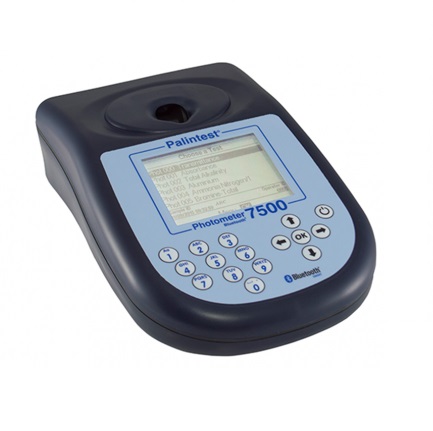The three Palintest iron test ranges rely on different chemical methods. Iron is present in water samples in a number of different forms, and the methods detect different fractions of the dissolved iron. Their application varies accordingly.

Iron occurs widely in nature and is found in many natural and treated waters. Iron is an objectionable constituent in both domestic and industrial water supplies. The presence of iron affects the taste of beverages and causes unsightly staining of laundered clothes, plumbing fittings, swimming pool surfaces and the like. The formation of insoluble iron deposits is troublesome in many industrial applications and in the agricultural water applications, such as drip feed irrigation. In industry, iron salts occur through corrosion of plant and equipment, and from industrial processes.
Iron is therefore an important test for monitoring natural and drinking waters, for corrosion control in industry and for checking of effluents and wastewaters.
Iron may be present in solution in both ferrous and ferric forms, as free iron and as weakly or strongly complexed iron. Chemicals such as EDTA (used in pool winterising treatment) and Calgon (a water softener) rapidly react with iron forming strong complexes. Iron may also be present in colloidal and particulate form.
| Test Method | Range | Chemistry |
| Iron LR | 0 to 1 mg/L Fe | A decomplexing/reducing agent breaks down weakly complexed forms of iron and converts ferric iron to ferrous iron. The ferrous iron reacts with PPST to form a pink colour. |
| Iron MR | 0 to 5 mg/L Fe | A strong decomplexing/reducing agent, dithionite, breaks down complexed iron and reduces it to the ferrous iron form. This reacts with 1,10 phenanthroline to form an orange coloured species. |
| Iron HR | 0 to 10 mg/L Fe | Thioglycollate breaks down weakly complexed forms of iron and reduces ferric iron to ferrous iron. This, together with any ferrous iron present in the sample, reacts with excess thioglycollate to produce a pink colour. |
The Iron MR test has the most powerful decomplexing agent, and this test can release iron from EDTA and polyphosphate water treatment chemicals, such as Calgon. It can even dissolve and quantify colloidal and fine particulate iron. The result may be treated as total iron. Few chemical tests are completely specific, most being subject to interferences from some other chemical species. The chemistry of the Iron MR test has good specificity for iron with few interferences. All these considerations make it a particularly useful test for industrial water applications and corrosion monitoring.
The Iron LR and HR tests determine free iron and weakly complexed iron. The tests are normally complete within one minute. These rapid tests provide useful instant information on free soluble iron, for example in swimming pools.
Complexing agents, such as Calgon, delay the response in the test. Continuing colour development after one minute is indicative of strongly bound iron complexes in the water. If tests are allowed to stand for longer, until the colour development is complete, more strongly bound complexed iron will be included in the measurement. This could take up to 20 minutes. A second reading after a 20 minute standing period can offer useful information on the presence of strongly bound iron species in the sample.